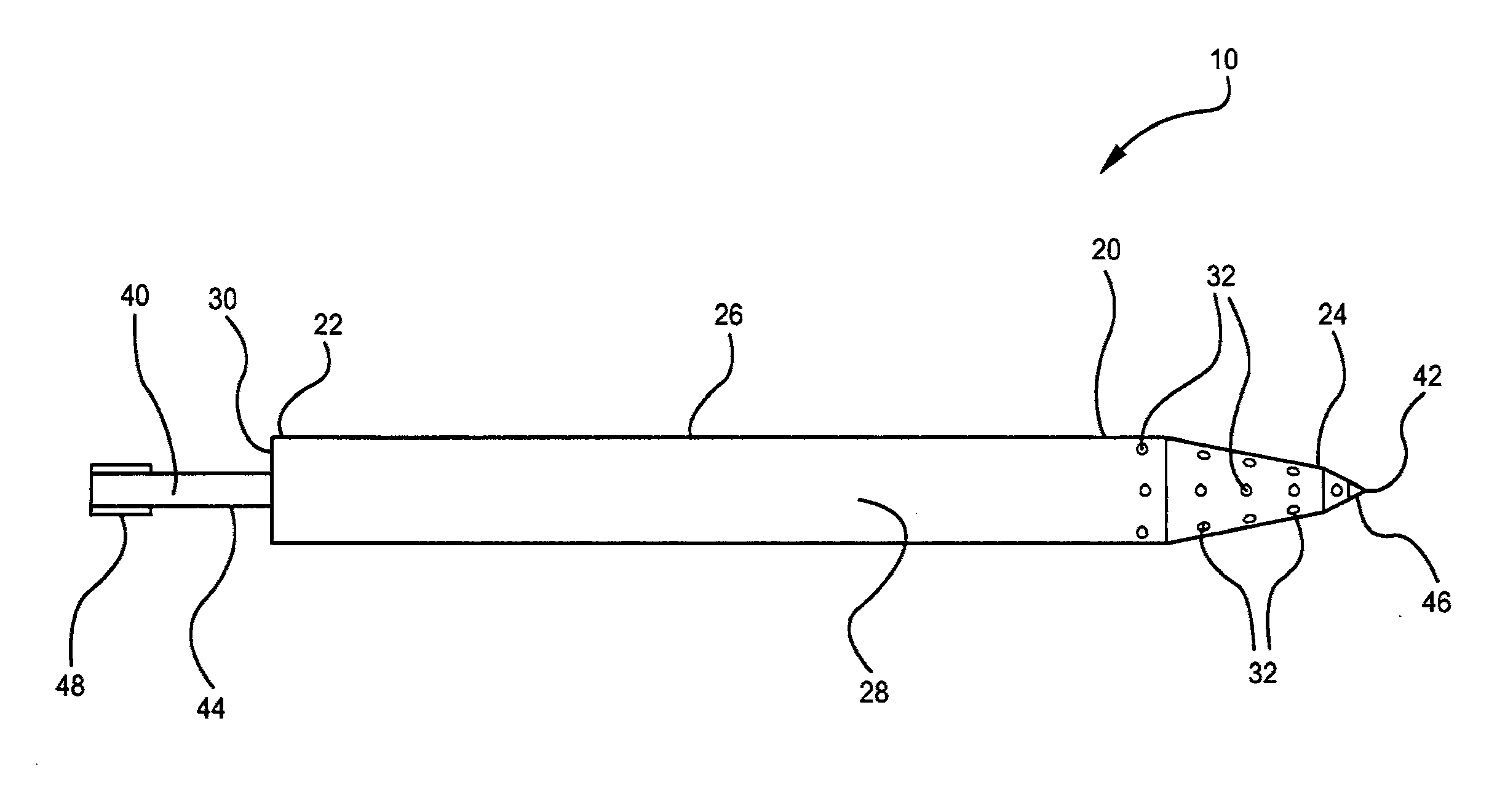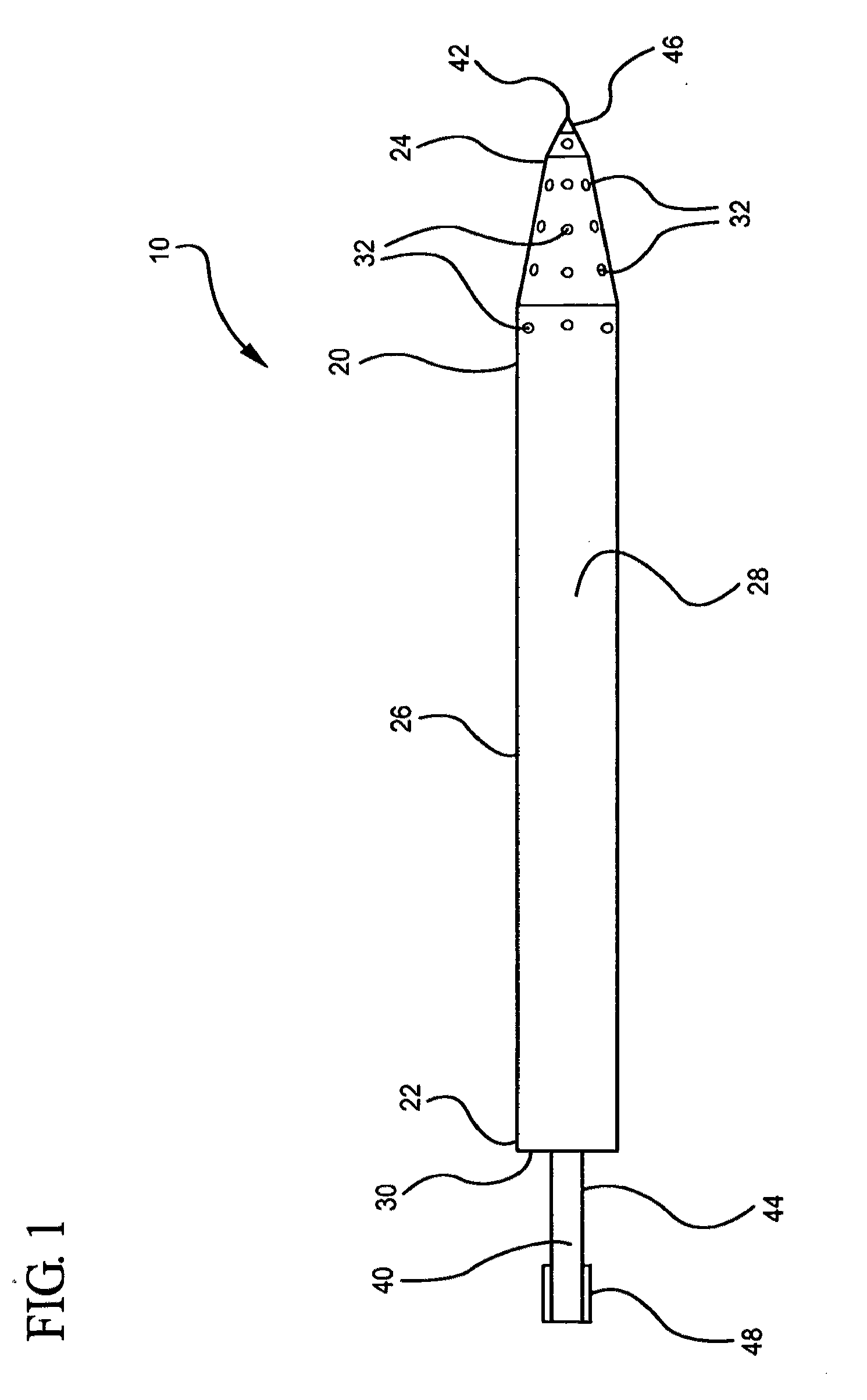Optimized intracranial catheters for convection-enhanced delivery of therapeutics
a technology of convection and intracranial catheter, which is applied in the direction of trocar, catheter, infusion needle, etc., can solve the problems of inability to control fluid leakage into the brain interstitial space, inability to target and target heterogeneous dispersion throughout the cns, and inability to achieve the goal of reducing the diameter of the catheter, and reducing the size of the catheter
- Summary
- Abstract
- Description
- Claims
- Application Information
AI Technical Summary
Benefits of technology
Problems solved by technology
Method used
Image
Examples
examples
[0032]Referring now to FIGS. 6A through 6D, an intracranial catheter delivery system in accordance with the present invention was implanted into the pons of a non-human primate model. An access hole was first provided through the skull of the patient at a location proximal to the treatment site so as to facilitate placement of the Vialon catheter via a Nitinol trocar. Prior to insertion, air within the catheter was purged with a priming solution. Once the catheter was placed within the patient's brain, targeted, localized delivery of an imaging agent was accomplished.
[0033]FIGS. 6A through 6D show four sequential MRI images taken during the infusion procedure. These images illustrate the progressive infusion of the imaging agent into the pons of the brain. Over the course of the procedure, an increasingly larger spot was formed and maintained at the end of the catheter without any signs of retrograde or leak back flow along the catheter. Furthermore, post operative examination of th...
PUM
 Login to View More
Login to View More Abstract
Description
Claims
Application Information
 Login to View More
Login to View More - R&D
- Intellectual Property
- Life Sciences
- Materials
- Tech Scout
- Unparalleled Data Quality
- Higher Quality Content
- 60% Fewer Hallucinations
Browse by: Latest US Patents, China's latest patents, Technical Efficacy Thesaurus, Application Domain, Technology Topic, Popular Technical Reports.
© 2025 PatSnap. All rights reserved.Legal|Privacy policy|Modern Slavery Act Transparency Statement|Sitemap|About US| Contact US: help@patsnap.com



